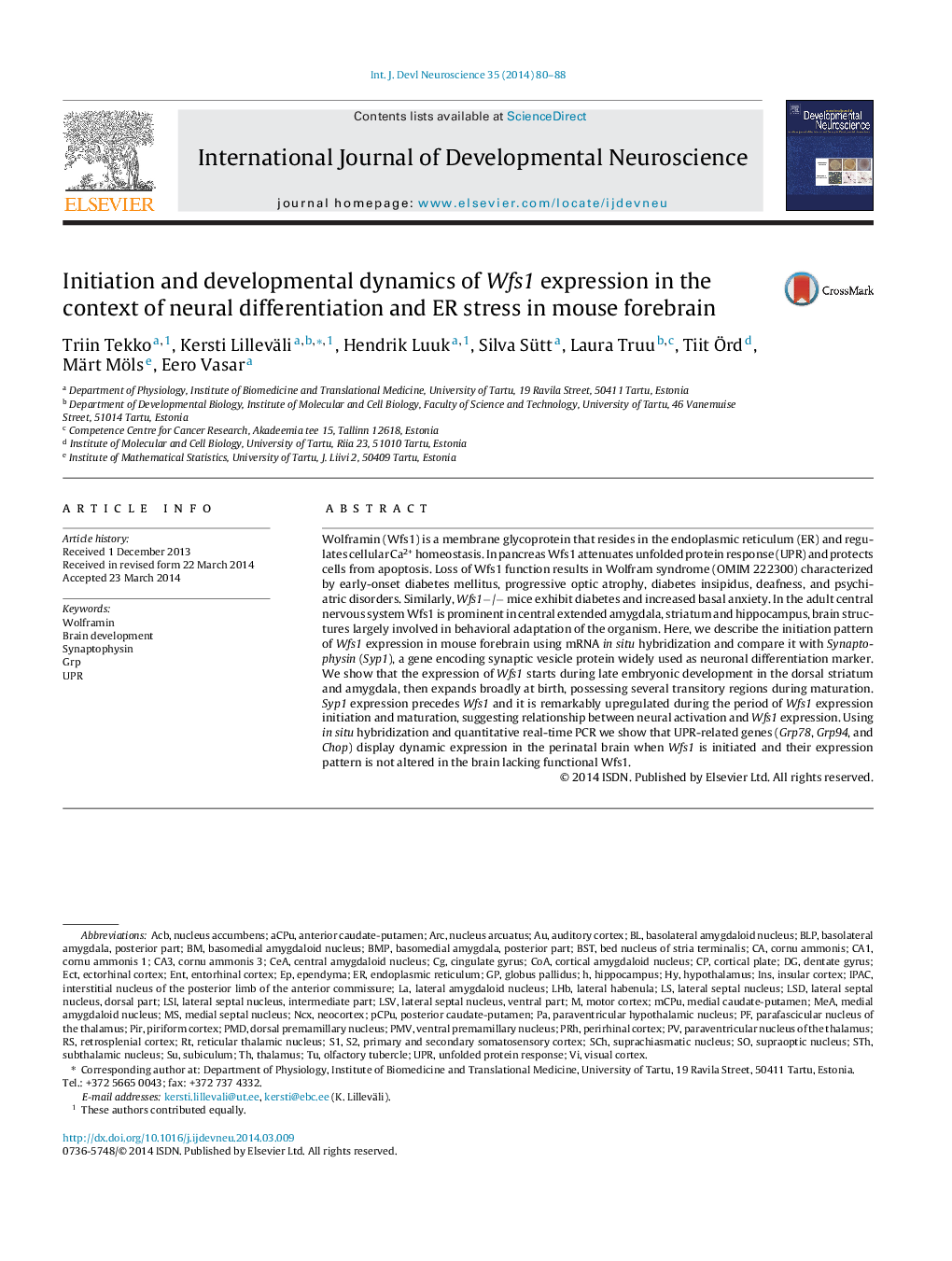| Article ID | Journal | Published Year | Pages | File Type |
|---|---|---|---|---|
| 2785996 | International Journal of Developmental Neuroscience | 2014 | 9 Pages |
•Wfs1 expression is initiated during late embryogenesis in mouse forebrain.•Wfs1 expression is dynamic and contains several transitory phases.•Wfs1 expression follows temporally to the marker of neural differentiation, Syp1.•UPR genes’ expression is downregulated immediately after birth.•Perinatal dynamics of Grp78, Grp94, Chop expression is preserved in Wfs1−/− brains.
Wolframin (Wfs1) is a membrane glycoprotein that resides in the endoplasmic reticulum (ER) and regulates cellular Ca2+ homeostasis. In pancreas Wfs1 attenuates unfolded protein response (UPR) and protects cells from apoptosis. Loss of Wfs1 function results in Wolfram syndrome (OMIM 222300) characterized by early-onset diabetes mellitus, progressive optic atrophy, diabetes insipidus, deafness, and psychiatric disorders. Similarly, Wfs1−/− mice exhibit diabetes and increased basal anxiety. In the adult central nervous system Wfs1 is prominent in central extended amygdala, striatum and hippocampus, brain structures largely involved in behavioral adaptation of the organism. Here, we describe the initiation pattern of Wfs1 expression in mouse forebrain using mRNA in situ hybridization and compare it with Synaptophysin (Syp1), a gene encoding synaptic vesicle protein widely used as neuronal differentiation marker. We show that the expression of Wfs1 starts during late embryonic development in the dorsal striatum and amygdala, then expands broadly at birth, possessing several transitory regions during maturation. Syp1 expression precedes Wfs1 and it is remarkably upregulated during the period of Wfs1 expression initiation and maturation, suggesting relationship between neural activation and Wfs1 expression. Using in situ hybridization and quantitative real-time PCR we show that UPR-related genes (Grp78, Grp94, and Chop) display dynamic expression in the perinatal brain when Wfs1 is initiated and their expression pattern is not altered in the brain lacking functional Wfs1.
